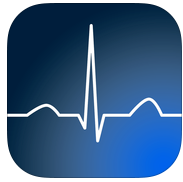Plug, Recap and Re-blog: inc. 5 days, 5 campuses
Plug

First of all, a quick plug for our short online course, 5 days, 5 campuses which is starting up next week (18-22nd April) and is designed to give you some new ideas to engage students in their learning. Each day we will discuss a particular topic relevant to teaching and learning with technology. There will be a short activity suggested each day and related workshops offered on each of the campuses. For more information please visit our edublogs site for the course: http://blogs.brighton.ac.uk/5days5campuses/
Recap
Back on the 24th of March we ran a health focused pop-up eLearning lab in Westlain House 211 at Falmer campus. The event was open to staff in SHS, DME, SASS and PABS*. We were delighted to have pretty good attendance numbers, especially as it was after the end of terms and close to the spring holidays.
We had five technology stations setup during the event and attendees could drop-in at any point over a three hour period.
- Nick ran a station about video technologies, including the FUSE app, the Falmer iPad loaner recording kits and a Swivl robot.
- Craig ran a station about wearable devices and health – if you are interested in this topic you may like this Storify about an #appswap at University of Sussex that Craig and I took part in at the end of last year: https://storify.com/fmacneill/apps-wearables-and-the-quantified-self
- Tucker ran a station helping with Techsmith (formely Camtasia) Relay questions.
- I ran a station where we looked at medical apps, including Essential Anatomy 5, the Prognosis series of medical case study apps, ECG Genius (see the re-blog below). We also had the Withings app in conjunction with a Bluetooth enabled blood pressure monitor which SASS were kind enough to lend to us for the day (Withings site).

The Bluetooth blood pressure monitor was particularly popular and we even tried comparing the result to a conventional blood pressure monitor. It wasn’t far off, with the Withings device I had a measurement of 103 over 65 and with the conventional monitor I had a measurement of 108 over 67. Of course this was not a scientific study, but it was interesting to observe the difference between how the meters worked and to consider how a Bluetooth medical device might be used to keep track of an ongoing health condition.
*SHS: School of Health Sciences; DME: Division of Medical Education; SASS: School of Applied Social Science; and PABS: School of Pharmacy and Biomolecular Sciences.
Re-blog of a post from the excellent folks at SGUL
I mentioned above that we looked at the ECG Genius app, which is an app that allows you to look at an ECG readout and the try to determine the health condition based on the readout information. St. George’s University of London Library (SGUL for short) wrote a smashing blog post on their mobile resources blog (https://sgulmobileresources.wordpress.com/) and kindly provided permission for me to re-blog the content here. Thank you Ka-Ming and the SGUL eLU team who created the app (check out their site and app catalogue here: http://www.elu.london/projects/apps/).
Originally posted on the SGUL Library’s Guide to Mobile Resources site on the 19th of January, 2016
– link to original post: https://sgulmobileresources.wordpress.com/2016/01/19/quick-look-guidelines-2/
<<<<Re-blog content>>>>
Quick Look: ECG Genius
Nam e: ECG Genius
e: ECG Genius
Publisher: St George’s, University of London
Devices: iPad (Requires iOS 7.0 or later)
Available from: iTunes Store
Price: £0.79
Type of information: The application allows undergraduate and postgraduate medical students to take interactive quizzes and engaging tutorials so as to develop knowledge in analysing and interpreting ECGs.
Main pros:
- Runs offline to be used on the go
- Easy to use and get started with
- Two types of playing modes depending on the ability of user
- Access to real patient ECGs
- Excellent tutor mode to give step by step guide on how to analyse ECGs
Main cons:
- Only available on an iPad
ECG Genius is a simple and easy to use app to learn to analyse and interpret ECGs. It consists of two modes for learning – Game mode and Tutor mode. In both of them, you are presented with real patient ECGs to choose the correct diagnosis from a list of options available.

There are tools embedded within the app to correctly measure ECG waves (for e.g. a ruler). There is an excellent ‘communications’ panel that prompts you to perform a step by step process in analysing the ECGs.
 The prompt also explains the reason behind an incorrect diagnosis and lead you through the right path. The tutor mode is similar to an instructor led learning process whereas the game mode is self-assessment involving quizzes. Overall, the app is an efficient learning tool for anyone interested in expanding knowledge in ECGs.
The prompt also explains the reason behind an incorrect diagnosis and lead you through the right path. The tutor mode is similar to an instructor led learning process whereas the game mode is self-assessment involving quizzes. Overall, the app is an efficient learning tool for anyone interested in expanding knowledge in ECGs.
